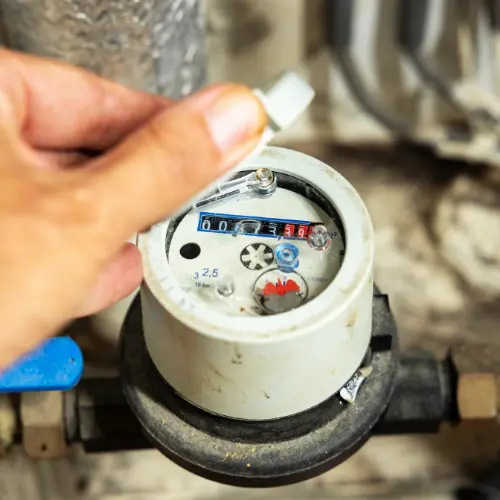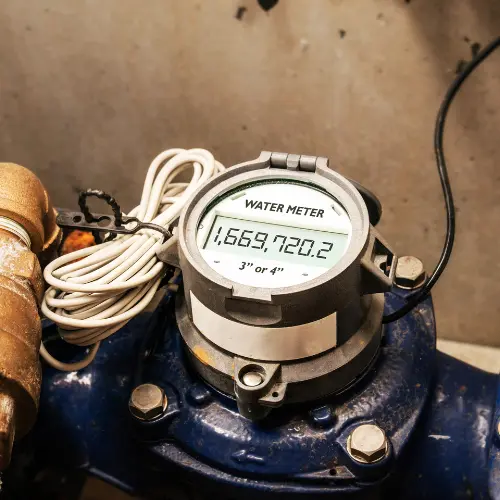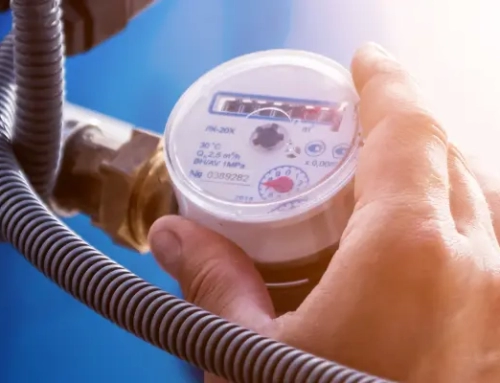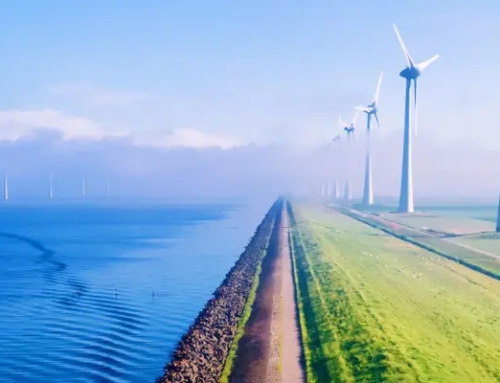Finding & reading your water meter

Keeping an eye on your water consumption is important for two reasons: to make sure you’re being billed accurately, and to catch any increases in your usage that could point to a leak.
The easiest way to do this is through regular meter readings. Reading your water meter is quick and easy once you know what you’re doing, so we’ve compiled all the information you’ll need – from finding your meter to reading it correctly.
What does a water meter look like?
This will depend on the type of water meter you have in your home or business – traditional or smart.
Traditional water meters
A standard water meter typically features a round metal or plastic casing with a clear cover on top, allowing you to view the dial beneath.
On the dial, you’ll find a series of numbers that indicate water usage, often accompanied by a needle that moves as water flows through.
These devices operate mechanically, with numbers rolling over as more water is consumed.


Smart water meters
A smart water meter has a more modern design, often featuring a digital display.
This digital display not only makes readings easier to understand but also allows for more precise data collection.
Smart meters can send your usage data directly to your utility provider, eliminating the need for manual readings.
Finding your water meter at home
Generally, residential water meters are located near the pavement in front of your property. They’re housed in a concrete box labeled “water,” which can be opened with a standard screwdriver.
To find your water meter, start by checking your property’s boundary near the main road. Look for a metal or plastic lid marked with “water”.
If you can’t spot it outside, it might be indoors. Common places to check include near the stop tap, often under the kitchen sink, in the bathroom, or by the boiler.
For those living in flats or apartments, water meters are usually located in the building’s communal cupboards or garages. However, they might also be inside your individual flat or apartment.
If you can’t locate your water meter, it might be worth contacting your local water supplier for assistance. They’ll have records of installations and can guide you accurately.
Finding your business water meter
Businesses often have multiple water meters due to larger premises and higher consumption needs. Knowing where these meters are located is essential for accurate monitoring and management.
Start by examining the property’s perimeter, specifically near the main water supply entry point. In commercial buildings, water meters can often be found in utility rooms, basements, or specific meter rooms.
For larger commercial premises, the water meter might be in a secure enclosure or a designated meter room. It’s important to note that business owners might require a key or access card to enter these areas.
Additionally, businesses might have sub-meters for different departments or sections, facilitating more detailed monitoring.
If you’re struggling to locate your water meter, consult your facility manager or maintenance team. They should have diagrams and records indicating the locations of all meters.

How to read a water meter
Your supplier should read your meter regularly, usually once or twice a year, however it’s important that you submit regular readings too.
If your supplier calculates your bill based on their readings, it may be higher or lower than your actual usage, meaning you’ll be over- or undercharged.
Reading a water meter is as easy as:
1. Find & access your water meter
Your water meter is typically housed in a small chamber beneath a metal or plastic cover. Meters are sometimes covered with large cast iron covers, which we advise against lifting for safety reasons.
Once the cover is removed, you may see a polystyrene frost cover which will need to be taken out to access the meter.
2. Check the serial number
Outdoor meters can share chambers, making it tricky to tell which one is yours. Match the serial number on your water bill to the serial number on the meter to make sure you’re reading the right one.
3. Note the black numbers
On the face of your water meter, you’ll notice two sets of numbers: black on the left and red on the right. The black numbers indicate the cubic metres of water you’ve used, while the red numbers and dials represent litres.
When taking your meter reading, ignore the red numbers and only note down the black numbers.
4. Submit your reading to your supplier
How you submit your water meter reading will depend on your supplier. You can generally submit readings online through their website or by giving them a call.
If you’re a water metering client of ours, send us your readings and we’ll submit these to your supplier for you. Upload them to our online portal here or share them with your dedicated energy consultant via email or a phone call.
Now you have a clearer understanding of how to find and read your water meter, you’re well on your way to better water management, positively impacting both your utility bills and environmental footprint.
Want to see how your business could slash its water bills and streamline its water management? Get in touch – from the initial assessment to consolidating and installing meters, our team of experts will guide you every step of the way.






